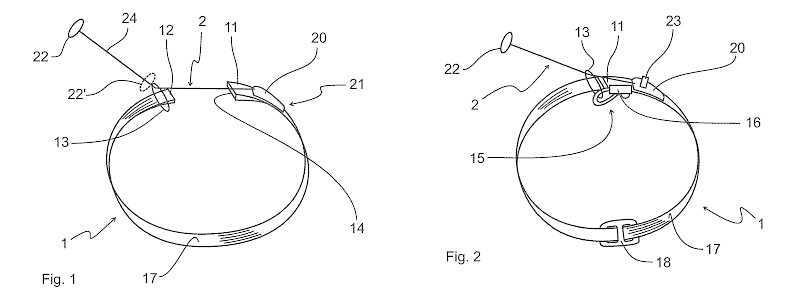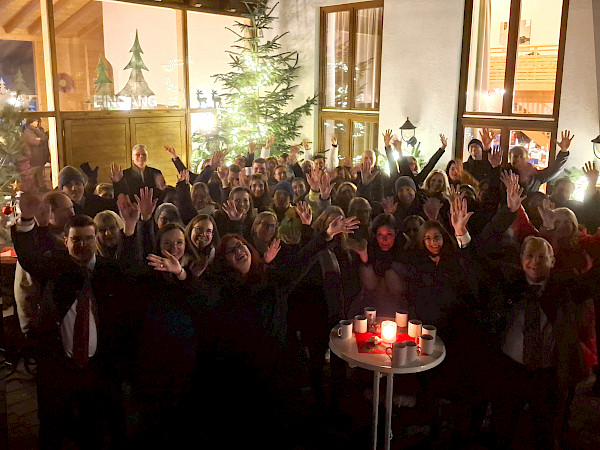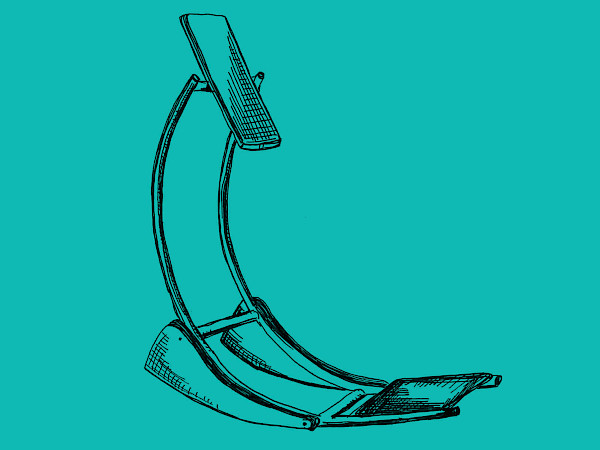WowWow – The dog collar with integrated leash
28.07.2022
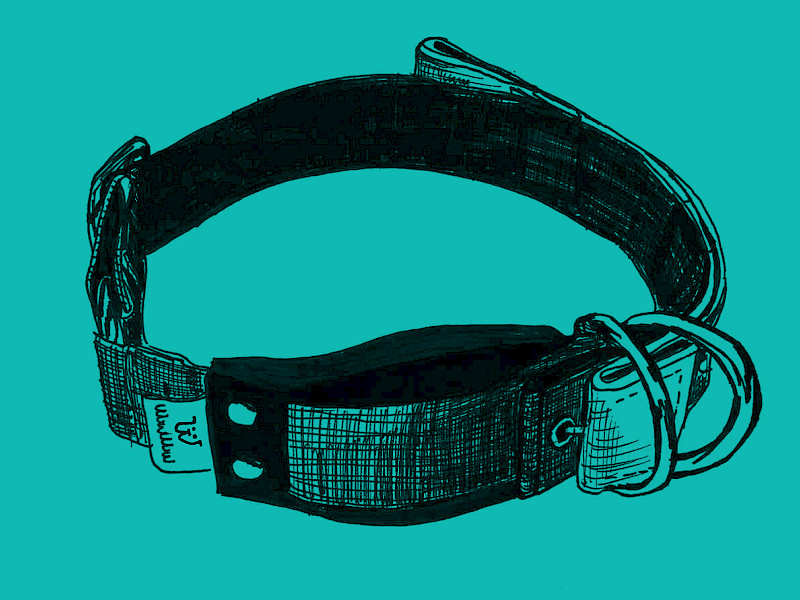
Shark Tank of Patents
In season 9, episode 11, of the TV show "Die Höhle der Löwen" (German version of the US show Shark Tank and the UK show Dragon's Den), an animal lover couple presents a new kind of dog collar. The WowWow is a dog collar that integrates a dog leash. The WowWow allows the dog owner to let the dog run free and to leash it up again at any time without having to carry the leash. The leash can be grabbed and pulled out in one easy step. This saves time when securing the dog.
A European patent has been granted for the WowWow. The WowWow is intended to show how a new application of a well-known technique can establish an inventive step.
Note: If a technique known per se is applied for the first time in another field of technology, this new application may be inventive under certain circumstances.
The European Patent Application –
EP3576521A1 (EP'521)
Subject-matter of protection
Originally, an attempt was made to protect the WowWow with an independent claim directed to a dog collar-leash combination (cf. reference signs in brackets from Figs. 1 and 2 of EP'521).
Claim 1 of EP'521 defines the following features:
M1: A dog collar and leash combination having a collar (1) and a leash (2) held in a housing (20) with a coiling and uncoiling mechanism (21),
M2: wherein the leash (2) in the housing (20) can be unwound against a spring force and an outer end of the leash (2) has a handle (22),
M3: characterized in that the collar (1) has two free ends (11, 12),
M4: wherein at the first end (11) there is provided the housing (20) for the leash (2) and at the second end (12) there is provided an eye (13) through which the leash (2) is passed.
Fig. 1 and Fig. 2 – drawing from EP3576521A1
Prior Art
In the international search report, the examiner cites novelty-destroying D1 (DE384432C) as relevant to all claims of EP'521. In particular, the examiner considers claim 1 as not novel over D1.
D1 discloses (cf. Fig. 1 of D1) a dog collar 10 with a leash 13 that retracts when the tension is released (cf. M1; see claim 1 of D1). In this case, the leash 13 (with finger ring 8) is retracted into the hose-like collar 10 itself by a helical spring 6 (cf. M2; see claim 1 and Fig. 1 of D1). Here, an end ring 11 (at one end of the collar 10) serves as a stop for a sliding ring 2 (at the other end of the collar 10) – cf. M3and M4.
Thus, the dog collar 10 of D1 has all of the features M1 to M4 as defined in claim 1 of EP'521.
Thus, original claim 1 of EP'521 is not novel over D1.
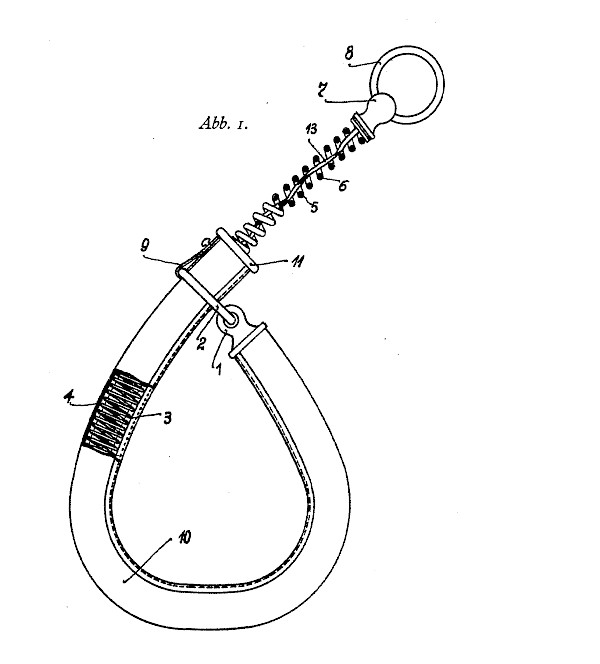
Effective delineation
from the prior art
Claim 1 was amended during the examination proceedings as follows (additions are highlighted):
N1: A dog collar and leash combination having a collar (1) and a leash (2) stored in a housing (20) with a coiling and uncoiling mechanism (21),
N2: wherein the leash (2) in the housing (20) can be unwound against a spring force and an outer end of the leash (2) has a handle (22),
N3: wherein the collar (1) has two free ends (11, 12),
N4: where at the first end (11) there is provided the leash (2) and at the second end (12) there is provided an eye (13) through which the leash (2) is passed,
N5: wherein the housing (20) for the leash (2) is provided at the first end (11),
N6: characterised in that the two ends (11, 12) of the collar (1) have reciprocal support elements (14) when their end faces approach one another.
These amendments constitute an effective delineation of the claim wording with respect to D1, since in D1 the sliding ring 2 and the end ring 11 have no reciprocal support elements and a frontal approach would not make any sense functionally in D1, since it is precisely the passing of the collar 10 through the sliding ring 2 that constitutes the core idea of D1. The assumption that D1 would nevertheless suggest such a frontal approach would thus be based on an inadmissible hindsight perspective.
Claim 1 thus differs from D1 in a non-obvious way.
Note: Obviousness requires that the skilled person arrives at the subject-matter of the invention from the document alone or based on a technical consideration. This technical consideration may be based on common general knowledge or even on a teaching in another document in the same field of technology.
The examiner cited two other documents D2 (US20140116354A1) and D3 (US20090255486A1) for the original claim 1, although not novelty-destroying.
These documents cited by the examiner could, in principle, contain a technical consideration that could render the subject-matter of amended claim 1 obvious and thus speak against an inventive step.
However, the above-mentioned distinguishing feature from D1 is not found in either D2 or D3. The respective mechanisms/functions envisaged in D2 and D3 can be easily understood from Fig. 2 of D2 and Fig. 1 of D3, as illustrated below.
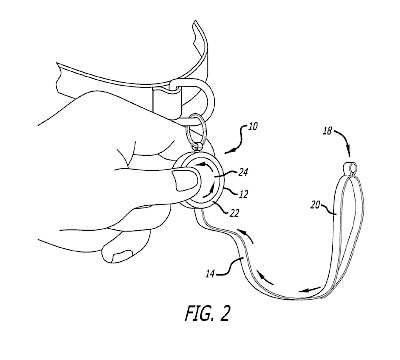
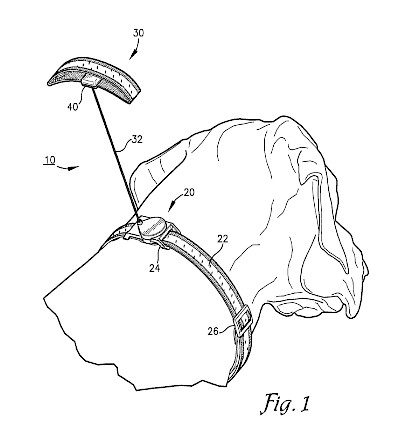
As can be seen from these figures of D2 and D3, the attachment mechanism of the collar (no reference sign in Fig. 2 of D2; collar 22 in Fig. 1 of D3) is based independently of the respective leash (leash 14 in Fig. 2 of D2; and leash 32 in Fig. 1 of D3).
Since the distinguishing feature is not shown in any of the documents D1 to D3 and no similar technical considerations are disclosed therein, an argumentation regarding an inventive step according to the problem-solution approach is entirely unnecessary. It is sufficient, in such a case, to point out to the examiner the non-obviousness of the present invention.
Thus, amended claim 1 of EP'521 is consequently not only novel, but also inventive over the prior art cited in the search report.
Conclusion
It was shown how a well-known technique of clamping (see, e.g., pull fastener in inline skates) could be used to effectively distinguish claim 1 from the cited prior art under patent law. It can be seen that it is not always necessary to discuss a technical advantage in order to show inventive step. In the present case, the above-described technique had not yet been considered in dog collars or dog leashes. This speaks from the outset in favor of an inventive step. It is true that D1 initially anticipated the wording of original claim 1 rather accidentally. In clarifying the actual invention in claim 1, D1 was then too far away from the basic inventive idea of the present invention to be able to still render it obvious. This applies to D1 alone, as well as in combination with D2 or D3, because these documents do not contain any technical consideration comparable to that used by WowWow.
Despite the limitation of the original claim 1, the patent grant that ultimately took place led to what we consider to be a thoroughly broad scope of protection for the WowWow. Ultimately, the core idea of the dog collar with integrated leash could be patented without any major restrictions of property rights, despite amendments during the examination proceedings. The patent can thus prevent competitors from entering the market or, if necessary, drive them out of the market.
Disclaimer: The above contribution reflects the personal opinion of the author. The assessments and statements made in the article do not constitute legal advice and are provided under exclusion of any liability. If you need an assessment of an individual case, please contact the author and/or the law firm KUHNEN & WACKER.
Further news and
publications from K&W

Start Your Career at K&W
and Become Part of Our Team
Are you ambitious and flexible? Do you like to work independently and are prepared to take responsibility? If so, K&W is your place to be.
Our HR manager Elwine Kaschner looks forward to receiving your application.

